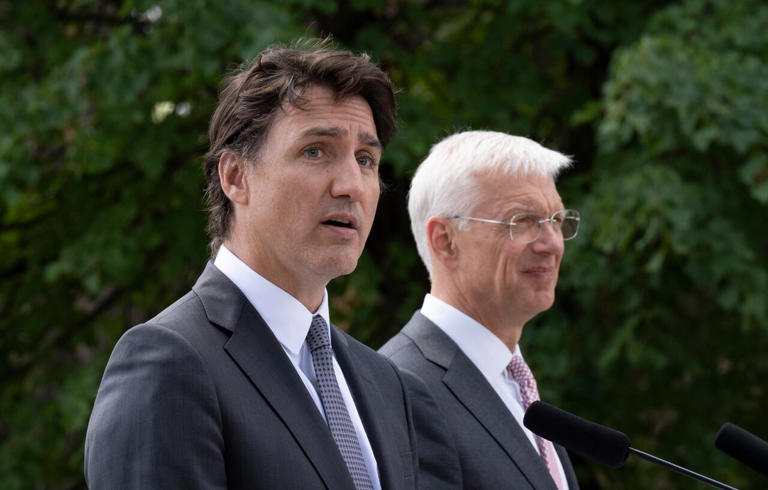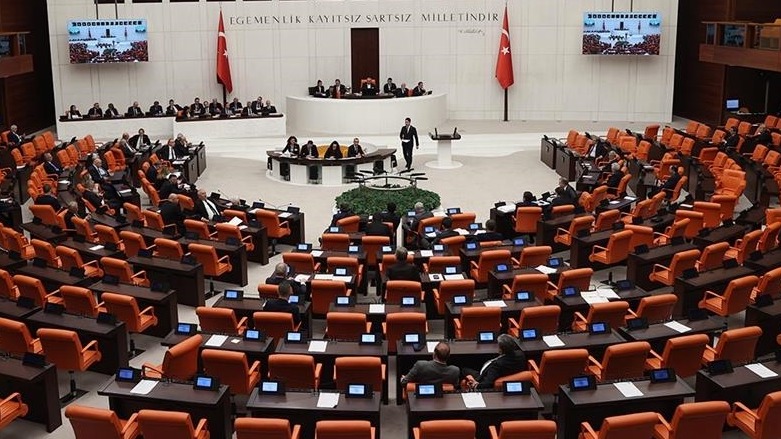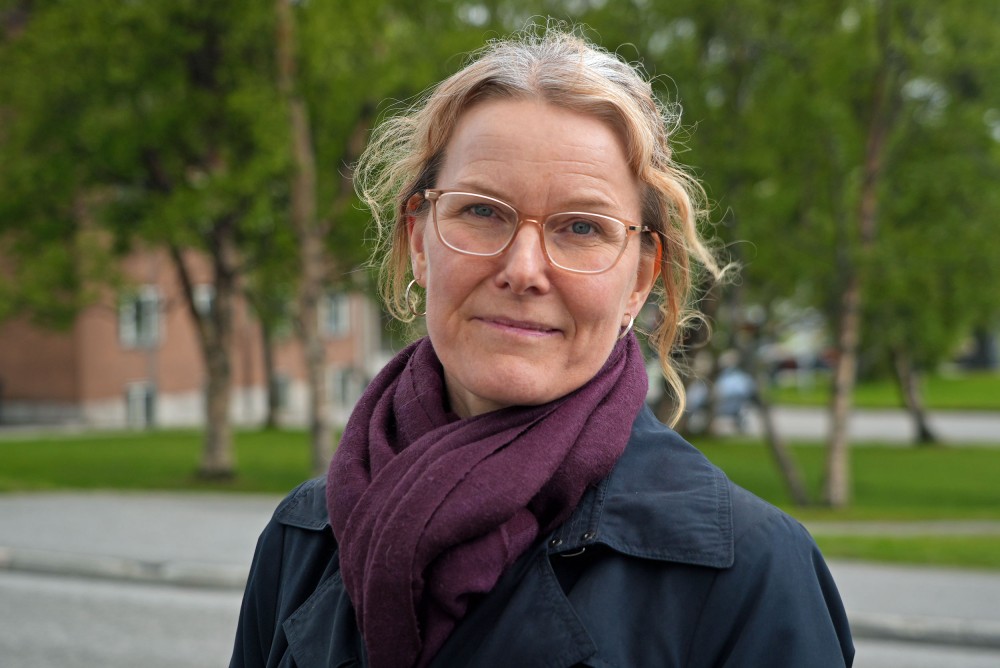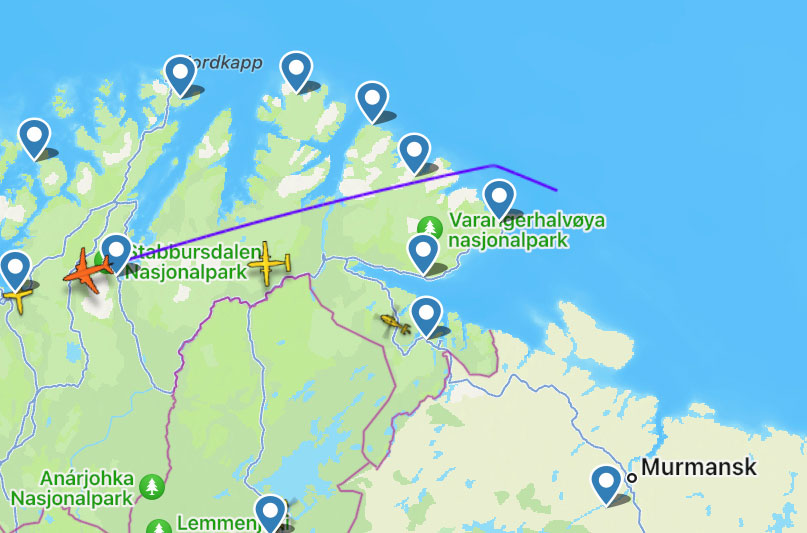by Robin Urevich, Capital & Main, and Gabriel Sandoval, ProPublica, photography by Barbara Davidson for ProPublica
This article was produced for ProPublica’s Local Reporting Network in partnership with Capital & Main. Sign up for Dispatches to get stories like this one as soon as they are published.
Jaime Colindres’ third-floor room at the American Hotel in Los Angeles was tiny, but in it he painted expansive scenes of the American West on salvaged pieces of wood. Guitar sounds filled the halls, and neighbors kept their doors open. Some residents landed there when the city’s ruthless rental market slammed its doors on them, but they quickly soaked up the creative soul that creaked and hummed, rattled and swelled through the battered hotel.
That was 10 years ago.
The American is now a boutique tourist hotel in LA’s downtown Arts District. Nearly all of its longtime residents have been replaced. But the culprit is not gentrification. It’s the city’s failure to enforce its own laws to preserve affordable housing.
A 2008 city ordinance sought to protect residential hotels like the American. Residential hotels often offer single-room dwellings and are sometimes the only housing that elderly, disabled and low-income people can afford. But Capital & Main and ProPublica found 21 such buildings, including the American, offering rooms to travelers.
Under the ordinance, owners who convert or demolish residential hotel rooms must either build new units or pay into a city housing fund. None of the 21 have received clearances from the city showing that they’ve done either, according to Housing Department records. But the agency has cited only four of the hotels for residential hotel violations, even as some buildings went through obvious transformations and publicly advertise rooms on travel websites, the news organizations found. The American wasn’t one of the hotels cited.
This week, the city announced it would investigate all 21 hotels for violations of the law and review the resources needed to improve enforcement. “We are asking for a report on how this happened and recommendations for ensuring this does not happen again,” said Zach Seidl, a spokesperson for LA Mayor Karen Bass.
But the city’s action comes too late for some. The American’s unhindered conversion into guest rooms and suites upended the lives of many tenants who called it home. Their stories illustrate the impact that LA’s failure to preserve affordable housing has had on the city’s low-income residents.
If the Housing Department’s planned investigation reveals violations of the residential hotel law, the American’s owner Mark Verge said, “We’ll work it out.” Verge previously said he was unaware of the residential hotel law. In an interview, he denied that the conversion left his former tenants in difficult situations, noting that he allowed tenants who wished to stay during the remodel to do so. “That hotel was falling apart,” Verge said. “I literally made them the greatest hotel ever and the greatest place to live.”
The 118-year-old hotel was a hotbed of creativity in part because its low rents gave artists the freedom to focus on their craft. For about $500 a month, most tenants got rooms that were barely big enough to fit their beds, with bathrooms at the end of the hall. The hotel was a place where people turned when they had nowhere to go. Once there, however, they joined a community that many embraced.
“It was just a flophouse for all us artists and musicians,” said Christiaan Pasquale, a singer and guitarist who lived at the hotel in the 1990s and again in the 2010s. “You almost get trapped at the American because it was so fun and so cheap.”
The American was unique because of the community its residents built and because it stood as a cultural hub in the Arts District. Al’s Bar, a graffiti-splattered dive on the hotel’s ground floor, was iconic in the LA music scene. For many residents, the club, which closed in 2001, was a hangout where they unwound at the end of the day. The bar oozed punk rock attitude. It hosted “No Talent” nights, displayed work by major LA artists and staged live theater events as well as hosting big-name acts like Beck, Ry Cooder and Hüsker Dü.
The American was a housing safety net for Colindres, who had lived at the hotel in the 1990s and again for about five years in the early 2010s. And it was too for Arturo Núñez, a truck driver who had been at the American for about six years until, he said, he was driven away by a bedbug infestation in 2013 before Verge began the hotel’s transformation. Núñez would duck out of gatherings with his Teamster co-workers at Denny’s and rush home to be with his neighbors at the American.
“We talked the same language: music, poetry, painting,” he said.

LA Promised to Preserve Low-Cost Housing. These Tenants’ Homes Were Turned Into Hotel Rooms Anyway.© Provided by ProPublicaWhen Arturo Núñez lived at the American, he said, he would duck out of gatherings with his fellow truckers and rush home to be with his neighbors.
New to the city, Jomar Giner, a 20-something transplant from Utah, ended up at the American in 2013 because it was her only housing option, she said. A would-be landlady had refused to rent to her because at the time Giner relied on disability payments. She was thrilled to learn that the punk bands she’d listened to as a teenager had played just a few floors below her room.
More important, at the American no one cared about her source of income, she said. She got a job as a barista at the coffee shop across the street from the hotel and quickly settled in.
“I became good friends with a lot of people,” she said. “They were really proud of the place.”

LA Promised to Preserve Low-Cost Housing. These Tenants’ Homes Were Turned Into Hotel Rooms Anyway.© Provided by ProPublicaAfter moving out of the American, Jomar Giner earned a master’s degree in social work, partly to be part of the solution to homelessness, after witnessing the extremes in LA’s Arts District. (Kristina Barker, special to ProPublica)
But as the neighborhood gentrified, Verge, an LA entrepreneur, bought the hotel and planned to renovate it. He told residents that those who could endure the dust, noise and intrusions of a remodel could stay. Some did. But he also provided an incentive for tenants to move, offering them between $2,000 and $19,000, depending on how long they’d lived there, their age and how long they held out, according to interviews with eight current and former residents. Many of the American’s residents accepted Verge’s offers, they said.
“We were all just desperate at the time,” and the money sounded good, Pasquale said. “We all worked hard at our crafts — I was in a band and touring. Any money like that was a big chunk of change.”
As the American’s tenants moved out, several said, they struggled to find stable housing for as little as they had paid at the hotel.
Giner received a $3,000 payment and, with the help of her then-boyfriend’s parents, scraped together enough cash for the couple to move into a Koreatown apartment. Colindres, the painter, said he negotiated a buyout of $19,000 but struggled to find housing because of a two-decade-old eviction. Instead, he joined an exodus of artists to the desert near Joshua Tree National Park, about 140 miles east of Los Angeles, where a friend had offered him a place to stay.
But after a few years, Colindres grew tired of his hot, lonely surroundings. He said he returned to LA and slept in his car.
By then, the hotel was being advertised to nightly guests. Tourists had begun reviewing the American on Yelp in 2016, with one writing, “All in all, a decent stay for very little coin.”

LA Promised to Preserve Low-Cost Housing. These Tenants’ Homes Were Turned Into Hotel Rooms Anyway.© Provided by ProPublicaOnly a handful of long-term residents still live at the American today.
In the years since the hotel’s conversion, it’s arguably become even harder for the former residents to find a replacement for the housing they had at the American. Several former residents left the state to be closer to family or to find more affordable housing.
Today, Colindres shares a studio apartment with a friend, piecing together a living painting signs for businesses, faux finishes for decorators and, sometimes, movie sets for independent films. Occasionally he sells one of his paintings.
This article was produced for ProPublica’s Local Reporting Network in partnership with Capital & Main. Sign up for Dispatches to get stories like this one as soon as they are published.
Jaime Colindres’ third-floor room at the American Hotel in Los Angeles was tiny, but in it he painted expansive scenes of the American West on salvaged pieces of wood. Guitar sounds filled the halls, and neighbors kept their doors open. Some residents landed there when the city’s ruthless rental market slammed its doors on them, but they quickly soaked up the creative soul that creaked and hummed, rattled and swelled through the battered hotel.
That was 10 years ago.
The American is now a boutique tourist hotel in LA’s downtown Arts District. Nearly all of its longtime residents have been replaced. But the culprit is not gentrification. It’s the city’s failure to enforce its own laws to preserve affordable housing.
A 2008 city ordinance sought to protect residential hotels like the American. Residential hotels often offer single-room dwellings and are sometimes the only housing that elderly, disabled and low-income people can afford. But Capital & Main and ProPublica found 21 such buildings, including the American, offering rooms to travelers.
Under the ordinance, owners who convert or demolish residential hotel rooms must either build new units or pay into a city housing fund. None of the 21 have received clearances from the city showing that they’ve done either, according to Housing Department records. But the agency has cited only four of the hotels for residential hotel violations, even as some buildings went through obvious transformations and publicly advertise rooms on travel websites, the news organizations found. The American wasn’t one of the hotels cited.
This week, the city announced it would investigate all 21 hotels for violations of the law and review the resources needed to improve enforcement. “We are asking for a report on how this happened and recommendations for ensuring this does not happen again,” said Zach Seidl, a spokesperson for LA Mayor Karen Bass.
But the city’s action comes too late for some. The American’s unhindered conversion into guest rooms and suites upended the lives of many tenants who called it home. Their stories illustrate the impact that LA’s failure to preserve affordable housing has had on the city’s low-income residents.
If the Housing Department’s planned investigation reveals violations of the residential hotel law, the American’s owner Mark Verge said, “We’ll work it out.” Verge previously said he was unaware of the residential hotel law. In an interview, he denied that the conversion left his former tenants in difficult situations, noting that he allowed tenants who wished to stay during the remodel to do so. “That hotel was falling apart,” Verge said. “I literally made them the greatest hotel ever and the greatest place to live.”
The 118-year-old hotel was a hotbed of creativity in part because its low rents gave artists the freedom to focus on their craft. For about $500 a month, most tenants got rooms that were barely big enough to fit their beds, with bathrooms at the end of the hall. The hotel was a place where people turned when they had nowhere to go. Once there, however, they joined a community that many embraced.
“It was just a flophouse for all us artists and musicians,” said Christiaan Pasquale, a singer and guitarist who lived at the hotel in the 1990s and again in the 2010s. “You almost get trapped at the American because it was so fun and so cheap.”
The American was unique because of the community its residents built and because it stood as a cultural hub in the Arts District. Al’s Bar, a graffiti-splattered dive on the hotel’s ground floor, was iconic in the LA music scene. For many residents, the club, which closed in 2001, was a hangout where they unwound at the end of the day. The bar oozed punk rock attitude. It hosted “No Talent” nights, displayed work by major LA artists and staged live theater events as well as hosting big-name acts like Beck, Ry Cooder and Hüsker Dü.
The American was a housing safety net for Colindres, who had lived at the hotel in the 1990s and again for about five years in the early 2010s. And it was too for Arturo Núñez, a truck driver who had been at the American for about six years until, he said, he was driven away by a bedbug infestation in 2013 before Verge began the hotel’s transformation. Núñez would duck out of gatherings with his Teamster co-workers at Denny’s and rush home to be with his neighbors at the American.
“We talked the same language: music, poetry, painting,” he said.

LA Promised to Preserve Low-Cost Housing. These Tenants’ Homes Were Turned Into Hotel Rooms Anyway.© Provided by ProPublicaWhen Arturo Núñez lived at the American, he said, he would duck out of gatherings with his fellow truckers and rush home to be with his neighbors.
New to the city, Jomar Giner, a 20-something transplant from Utah, ended up at the American in 2013 because it was her only housing option, she said. A would-be landlady had refused to rent to her because at the time Giner relied on disability payments. She was thrilled to learn that the punk bands she’d listened to as a teenager had played just a few floors below her room.
More important, at the American no one cared about her source of income, she said. She got a job as a barista at the coffee shop across the street from the hotel and quickly settled in.
“I became good friends with a lot of people,” she said. “They were really proud of the place.”

LA Promised to Preserve Low-Cost Housing. These Tenants’ Homes Were Turned Into Hotel Rooms Anyway.© Provided by ProPublicaAfter moving out of the American, Jomar Giner earned a master’s degree in social work, partly to be part of the solution to homelessness, after witnessing the extremes in LA’s Arts District. (Kristina Barker, special to ProPublica)
But as the neighborhood gentrified, Verge, an LA entrepreneur, bought the hotel and planned to renovate it. He told residents that those who could endure the dust, noise and intrusions of a remodel could stay. Some did. But he also provided an incentive for tenants to move, offering them between $2,000 and $19,000, depending on how long they’d lived there, their age and how long they held out, according to interviews with eight current and former residents. Many of the American’s residents accepted Verge’s offers, they said.
“We were all just desperate at the time,” and the money sounded good, Pasquale said. “We all worked hard at our crafts — I was in a band and touring. Any money like that was a big chunk of change.”
As the American’s tenants moved out, several said, they struggled to find stable housing for as little as they had paid at the hotel.
Giner received a $3,000 payment and, with the help of her then-boyfriend’s parents, scraped together enough cash for the couple to move into a Koreatown apartment. Colindres, the painter, said he negotiated a buyout of $19,000 but struggled to find housing because of a two-decade-old eviction. Instead, he joined an exodus of artists to the desert near Joshua Tree National Park, about 140 miles east of Los Angeles, where a friend had offered him a place to stay.
But after a few years, Colindres grew tired of his hot, lonely surroundings. He said he returned to LA and slept in his car.
By then, the hotel was being advertised to nightly guests. Tourists had begun reviewing the American on Yelp in 2016, with one writing, “All in all, a decent stay for very little coin.”

LA Promised to Preserve Low-Cost Housing. These Tenants’ Homes Were Turned Into Hotel Rooms Anyway.© Provided by ProPublicaOnly a handful of long-term residents still live at the American today.
In the years since the hotel’s conversion, it’s arguably become even harder for the former residents to find a replacement for the housing they had at the American. Several former residents left the state to be closer to family or to find more affordable housing.
Today, Colindres shares a studio apartment with a friend, piecing together a living painting signs for businesses, faux finishes for decorators and, sometimes, movie sets for independent films. Occasionally he sells one of his paintings.

LA Promised to Preserve Low-Cost Housing. These Tenants’ Homes Were Turned Into Hotel Rooms Anyway.© Provided by ProPublicaColindres shows off his paintings at the friend’s apartment where he lives. (Robin Urevich)
Colindres said he doesn’t know how long he can stay in his place, and in LA, he said, “I have no place to go.”
Núñez, the truck driver, lives in his 1991 maroon Ford van with two cats, T.K. (for tiny kitty) and Orangey. He cooks on a propane stove — red chile with pork is his specialty, he said. The van is immobile, and he pays $100 per month from his Social Security check for a parking spot marked off with orange cones in a lot just a few blocks from the American.

LA Promised to Preserve Low-Cost Housing. These Tenants’ Homes Were Turned Into Hotel Rooms Anyway.© Provided by ProPublicaNúñez lives in his van. He pays $100 a month to park in downtown LA, near the American.
On a blustery March afternoon, Núñez spotted Colindres across the parking lot and greeted him with elaborate tai chi-like gestures — a nod to Colindres’ longtime practice of the ancient Chinese art.
Núñez retrieved battered chairs from his van as the two sat and reminisced about the ups and downs of their days at the American.
“This is my neighborhood,” Núñez said, gesturing toward the hotel. “I’d move in now.”
But moving in isn’t an option. The American’s online hotel policies say guests can’t stay longer than 21 days.

LA Promised to Preserve Low-Cost Housing. These Tenants’ Homes Were Turned Into Hotel Rooms Anyway.© Provided by ProPublicaA view of nightlife in the Arts District in downtown LA, home of the American













